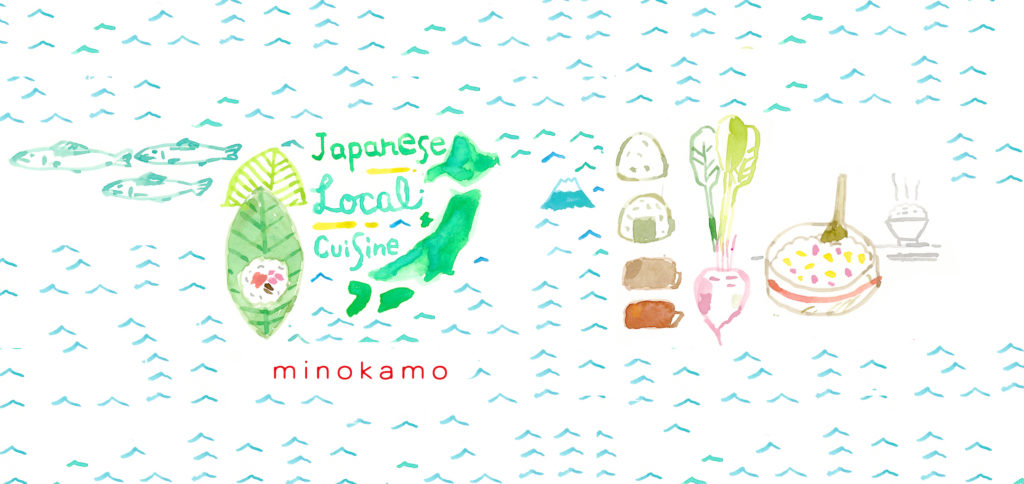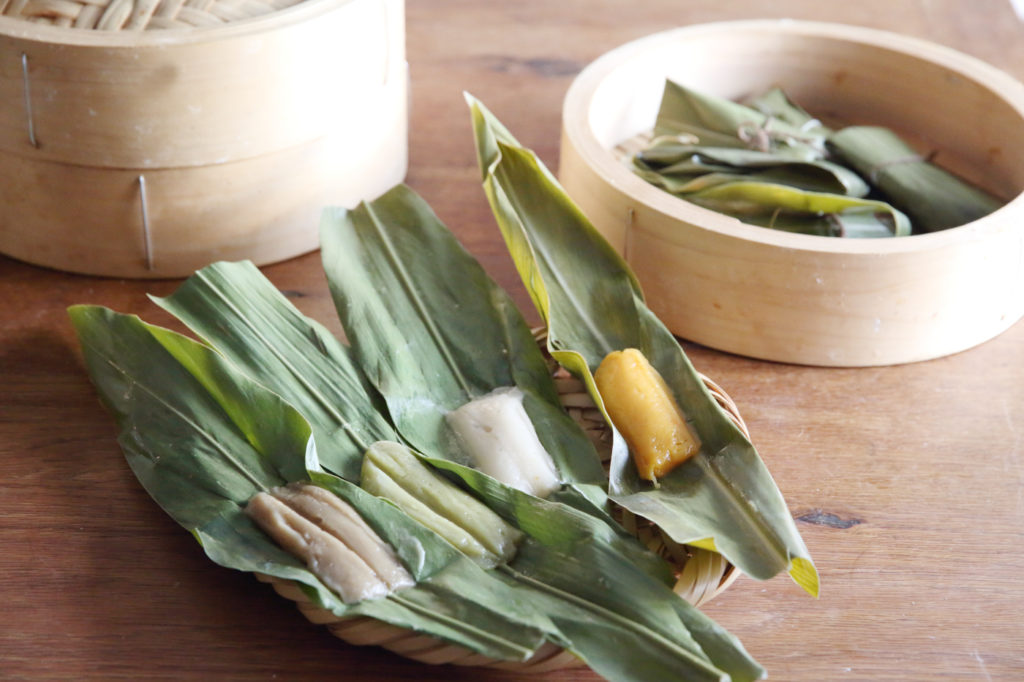
Ingredients (makes 5 small pieces each)
or just make a lot of your favorite flavor.
<White muchi>
100 g shiratamako / sweet rice flour
50 g sugar
About 90 cc lukewarm water
5 shell ginger leaves
<Pumpkin muchi>
(A)
100 g shiratamako / sweet rice flour
50 g sugar
50 g steamed and pureed pumpkin (remove the skin)
About 40 cc lukewarm water
5 shell ginger leaves
<Brown sugar muchi>
60 g brown sugar
100 g shiratamako / sweet rice flour
About 90 cc lukewarm water
5 shell ginger leaves
<Matcha muchi>
1 g matcha / powdered green tea leaves
100 g shiratamako / sweet rice flour
50 g sugar
About 90 cc lukewarm water
5 shell ginger leaves
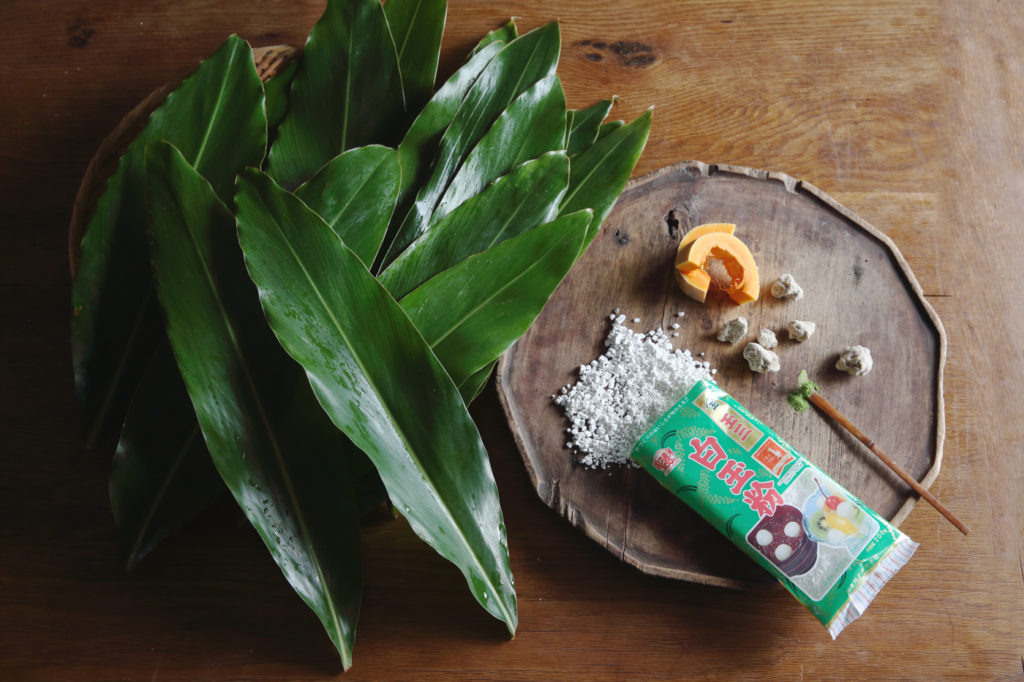
How to Make
1. Wash and wipe the shell ginger leaves.
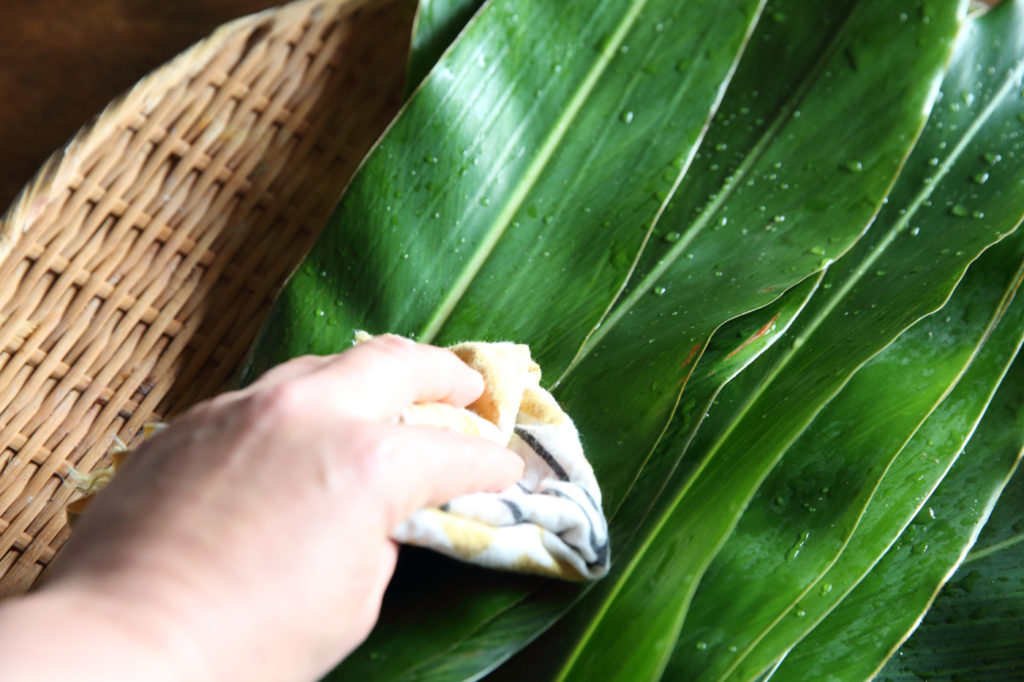
2. Combine (A) with lukewarm water and knead by hand until the dough is slightly softer than your earlobe. Oil the underside of the shell ginger leaves with a paper towel dipped in vegetable oil (not in recipe); this will make it easier to remove the mochi from the leaf.
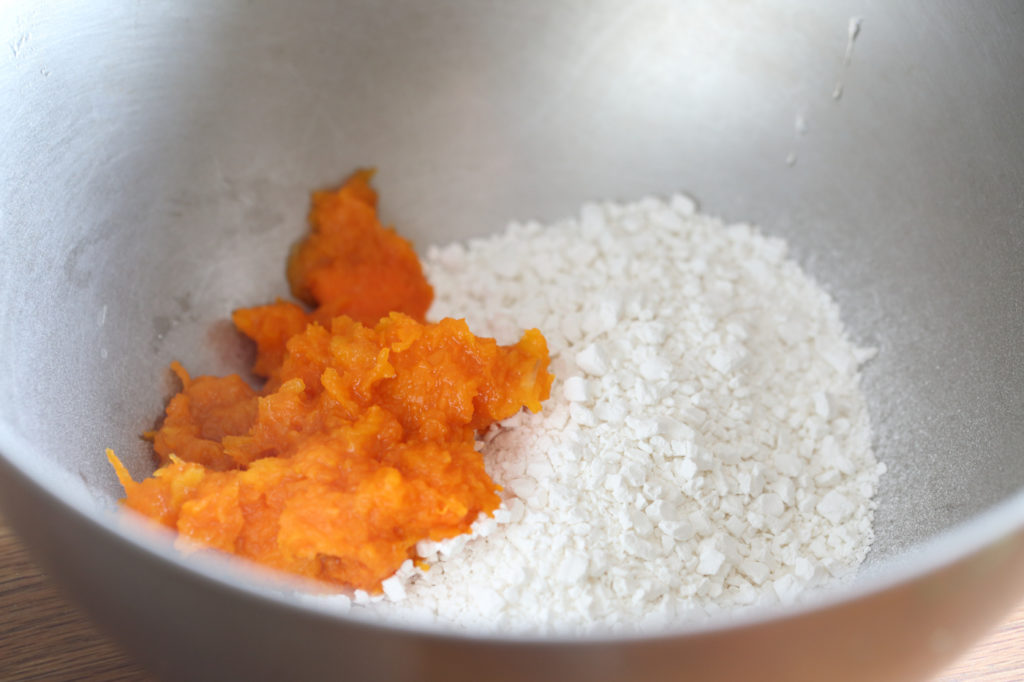
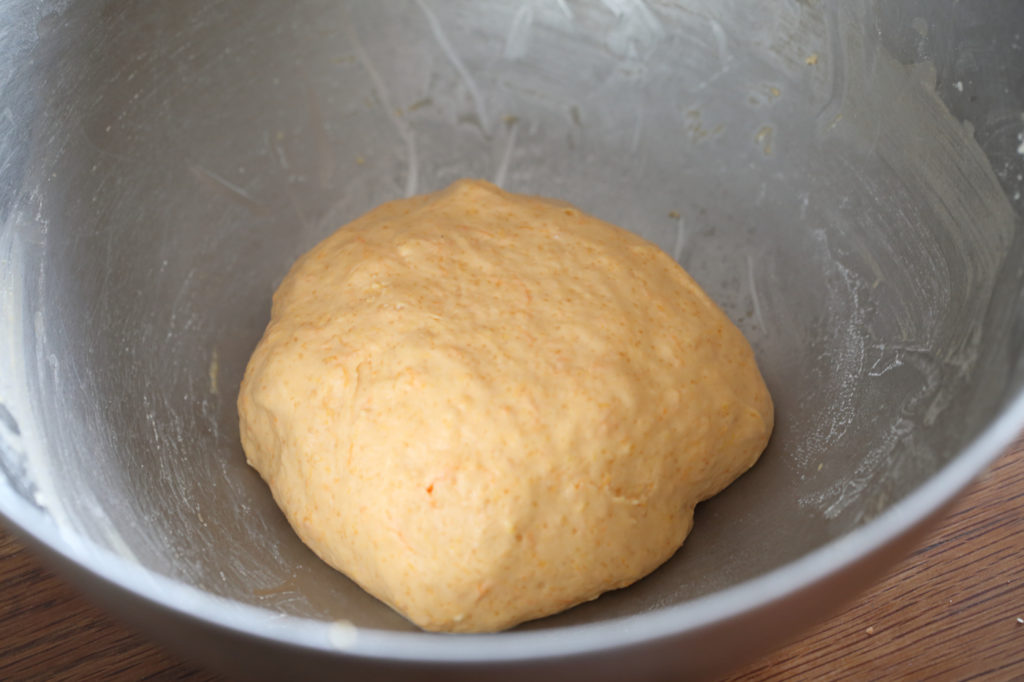
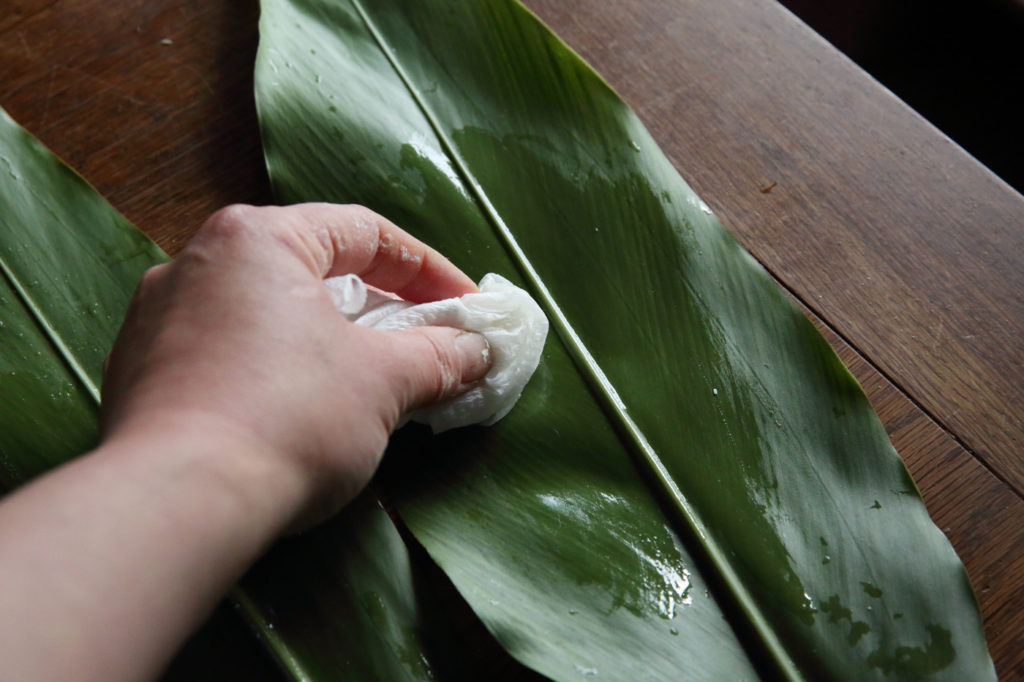
3. Divide the dough into five equal portions. Roll each into a long thin piece, place on the center of a leaf, fold the leaf’s edges in and then the tip and the base, and tie with twine.
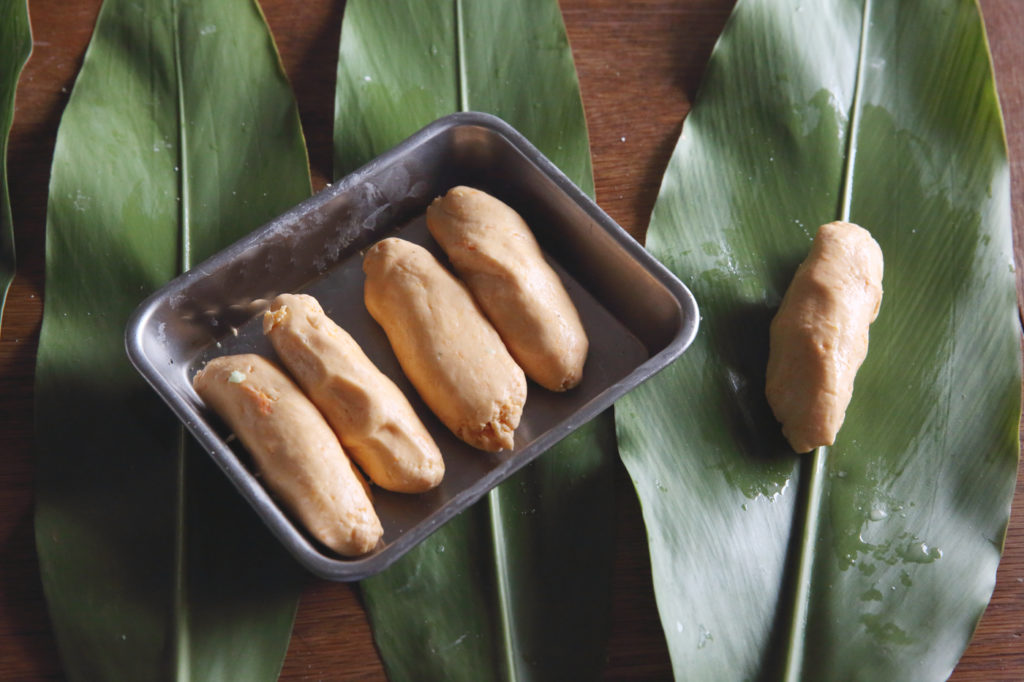
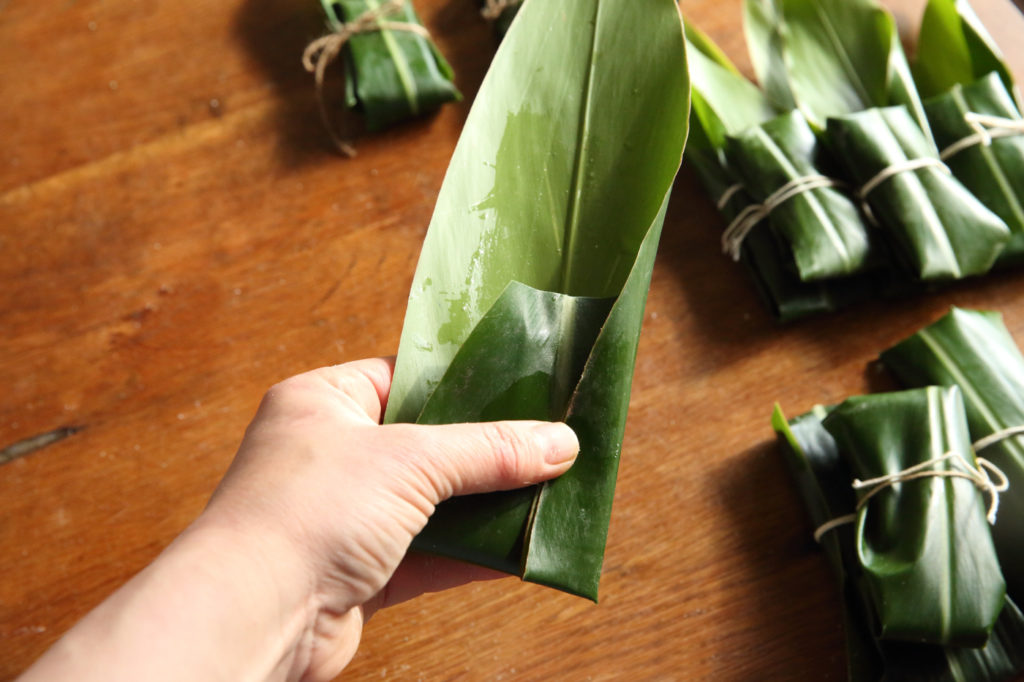
4. Cook in a steamer for 10–15 minutes. Muchi tastes good when freshly cooked, but it’s easier to remove from the leaf after letting sit for several hours. If the dough turns hard the next day, warm it in the microwave.
* This time, I changed the wrapping style and twine color according to the flavor.
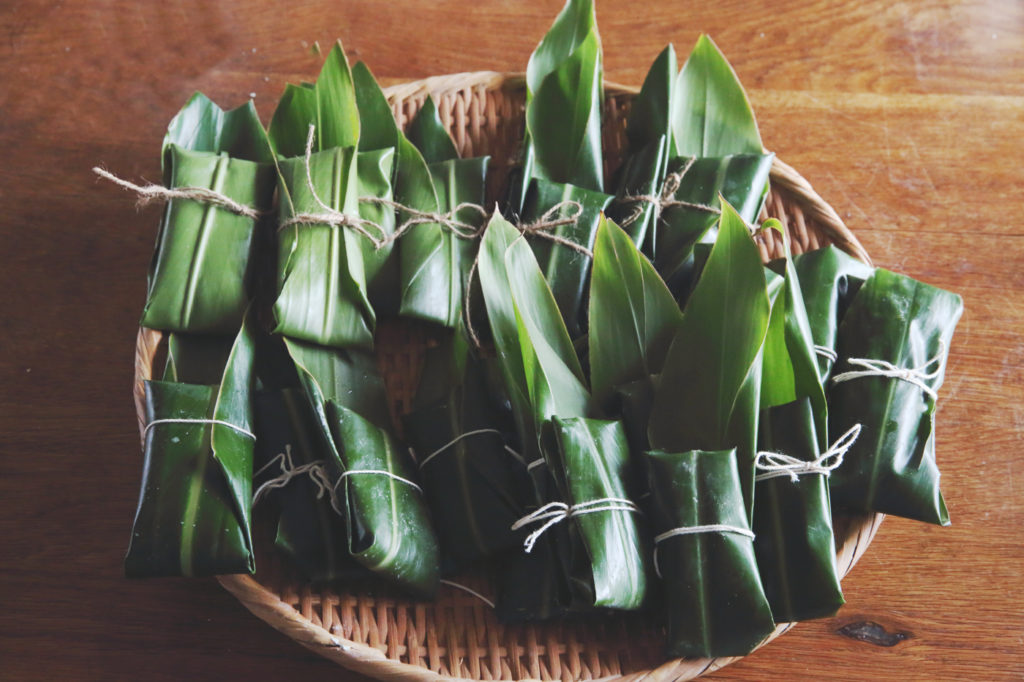
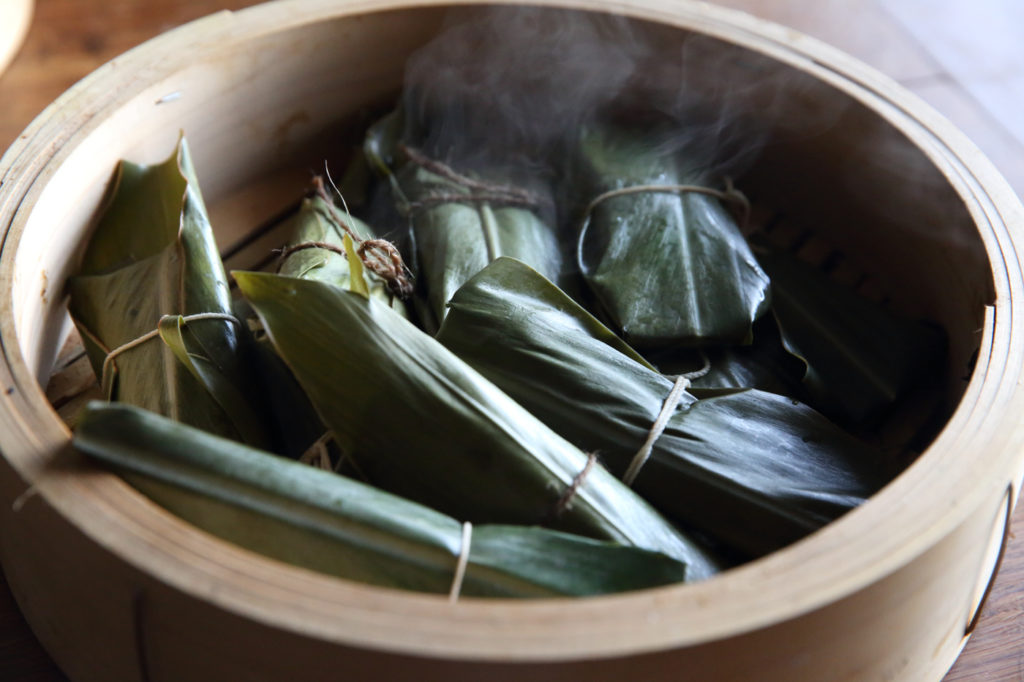
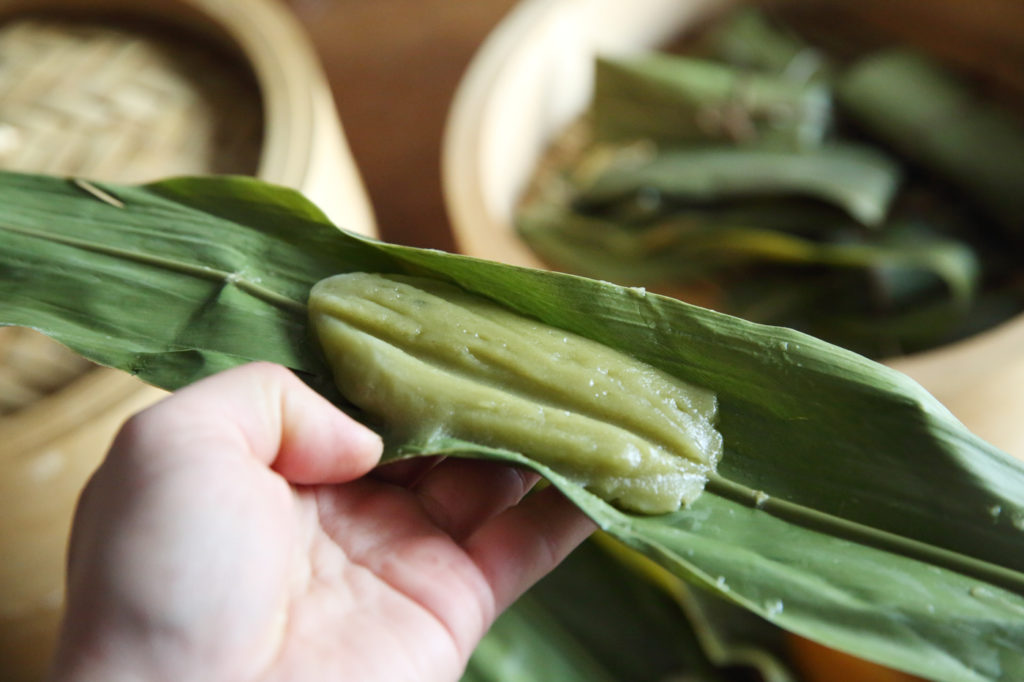
I asked a group of young workers in Gifu who were raised in Okinawa which Okinawan dishes they missed the most, and they told me muchi and suchika. Suchika is a salted pork that tastes amazing paired with sake as well as other varieties of liquor. This time, I tried making muchi, which is a mochi rice cake wrapped in flowery fragrant shell ginger leaves, called kaasa or muchi-gaasa (literally “mochi wrapping leaves”). The leaves have bactericidal properties and are also used when making agarasa (Okinawan brown sugar steamed bread). December 8 on the lunisolar calendar is celebrated in Okinawa as Muchi Day. The residents eat muchi to ward off evil, and hence the rice cake is also known as onimochi (ogre mochi). On other days, muchi is a standard snack that is sold year-round. When it’s made at home, it’s made by the dozens. The dough is prepared from mochiko (a finely powdered sweet rice flour) and usually flavored with plain white sugar, purple yam, or brown sugar; a richer version might contain whole peanuts.
For my recipe, I ordered the shell ginger leaves from Okinawa, prepared a subtly sweet dough using shiratamako (a coarser, grainier sweet rice flour that stays soft for a longer time than mochiko), and made four varieties using ingredients that I had on hand: brown sugar, matcha, pumpkin, and white sugar. The batches of steaming muchi filled my kitchen with the aroma of the shell ginger leaves. The workers from Okinawa were delighted with the nostalgic, familiar taste, and serving them made me happy too. I love discovering the delicious scents and flavors that remind each of us of our hometown or our mother’s cooking.
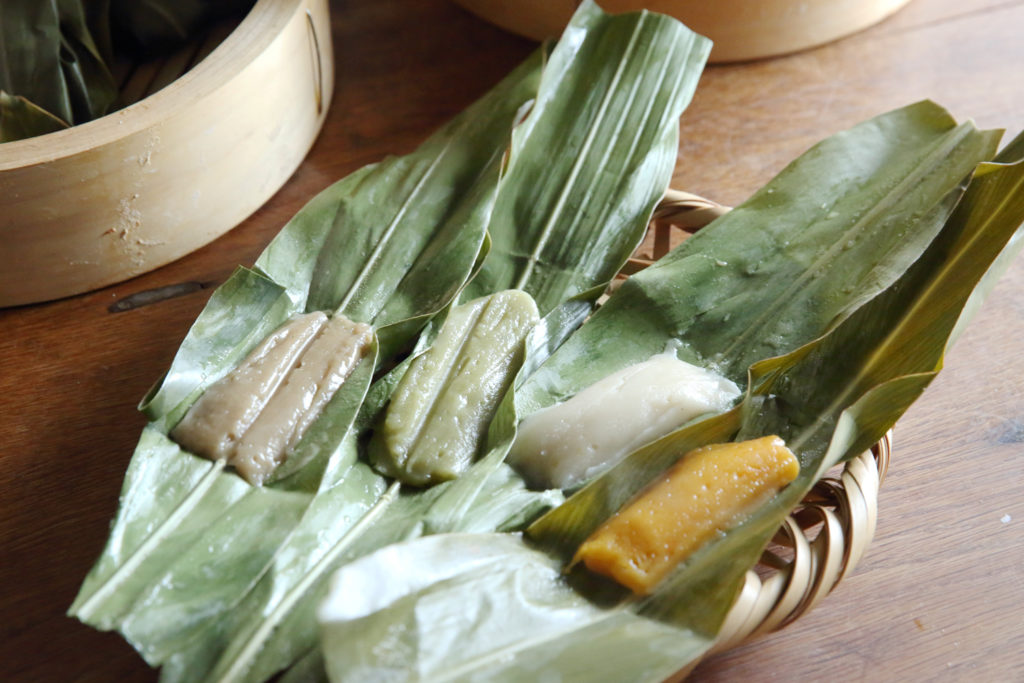
minokamo | Cookery expert / Photographer
Gifu Prefecture native minokamo’s culinary adventures were inspired by her fond childhood memories of cooking with her grandmother. She researches, writes about, and arranges regional dishes that capture, through their preparation and presentation, sensory enjoyments inspired by local climate, history, and lifestyles. Ryori tabi kara tadaima(Back from a Cooking Journey; Fudosha), published in September 2020, is a collection of recipes from minokamo’s visits to homes up and down Japan.
